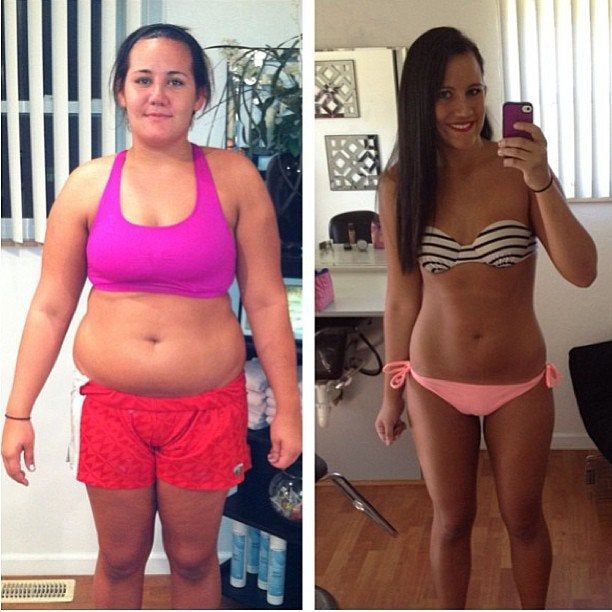The Science of Weight Loss Understanding How Your Body Burns Fat
Weight loss is a journey that combines science, dedication, and the understanding of one’s own body. It’s not just about shedding pounds; it’s about unlocking the secrets of how our bodies burn fat.
This article will delve into the biological processes behind fat burning, including metabolism, the role of hormones, and how different types of exercise affect the body.

Understanding Metabolism
Metabolism is often mentioned in the context of weight loss, but it’s a term that encompasses much more than just the burning of calories. At its core, metabolism is the sum of all chemical reactions within the body that sustain life. These reactions are responsible for everything from converting food into energy to synthesizing the building blocks of cells. It’s a continuous process that keeps our bodies functioning from moment to moment.
The rate at which your body burns calories is known as the metabolic rate. This rate can vary greatly from person to person due to factors like genetics, age, sex, muscle mass, and physical activity. A faster metabolic rate means that the body is using more energy to maintain its basic functions, which can lead to easier weight loss because the body requires more calories to keep up with these energy demands.
Metabolism is divided into two categories: catabolism and anabolism. Catabolism is the breakdown of molecules to obtain energy, and anabolism is the synthesis of all compounds needed by the cells. Balancing these two aspects is crucial for maintaining a healthy weight and overall health.
Enzymes play a critical role in these metabolic pathways, acting as catalysts that allow reactions to occur more efficiently. Hormones regulate these enzymes, signaling when to speed up or slow down the metabolic processes.
The Role of Hormones in Weight Loss
Hormones are integral to the process of metabolism and, by extension, weight loss. They act as messengers that tell your body when to feel hungry, when to store fat, and when to burn it. Several key hormones are involved in the process of weight loss:
- Insulin: This hormone, secreted by the pancreas, helps regulate blood sugar levels by facilitating the uptake of glucose into cells. When insulin levels are high, the body is more likely to store fat. Therefore, maintaining a balance of insulin is crucial for weight loss.
- Cortisol: Often called the stress hormone, cortisol can influence your metabolism. High levels of cortisol can lead to overeating and weight gain, as it has been linked to increased abdominal fat.
- Thyroid Hormones: Thyroxine (T4) and triiodothyronine (T3), hormones produced by the thyroid gland, are key regulators of metabolic rate. An underactive thyroid can slow metabolism, making weight loss more challenging.
- Leptin and Ghrelin: These hormones regulate appetite. Leptin decreases hunger, while ghrelin increases it. When these hormones are out of balance, it can lead to increased food intake and weight gain.
Balancing these hormones is a delicate process. Diet, exercise, sleep, and stress management can all influence hormone levels. For example, consuming too much sugar can cause spikes in insulin, leading to increased fat storage. On the other hand, regular physical activity can help maintain a healthy balance of cortisol and improve insulin sensitivity.
The Impact of Macronutrients
Macronutrients are the nutrients that provide the bulk of the energy requirements for our body. They are categorized into three groups: carbohydrates, proteins, and fats. Each of these plays a distinct role in how the body functions, especially in the context of metabolism and weight loss.
- Carbohydrates: They are the body’s primary energy source. Once ingested, carbohydrates are broken down into glucose, which is used for immediate energy or stored as glycogen in muscles and the liver for later use. However, consuming more carbohydrates than the body can use or store can lead to an increase in body fat. The type of carbohydrates consumed also matters. Complex carbohydrates like whole grains, vegetables, and fruits are digested more slowly and provide a more sustained energy release than simple carbohydrates, which can spike blood sugar levels and potentially lead to increased fat storage if not utilized.
- Proteins: Proteins are crucial for the repair and growth of tissues, but they also have a significant impact on weight loss. They can increase feelings of fullness, which may lead to a reduction in overall calorie intake. Additionally, the body expends more energy digesting proteins compared to carbohydrates and fats, a phenomenon known as the thermic effect of food. This means that a higher protein intake can slightly boost the number of calories burned throughout the day, aiding in weight loss.
- Fats: Fats have often been vilified in the context of weight loss, but they are essential for the absorption of vitamins and the production of hormones. Not all fats are created equal. Monounsaturated and polyunsaturated fats, found in foods like avocados, nuts, and fish, can support heart health and provide a long-lasting source of energy. On the other hand, trans fats and some saturated fats, often found in processed foods, can contribute to health issues and weight gain.
Understanding the balance and the role of each macronutrient is essential for effective weight management. A diet that includes a healthy balance of carbohydrates, proteins, and fats can help maintain a robust metabolism and aid in weight loss.

The Importance of a Caloric Deficit
The fundamental principle behind weight loss is creating a caloric deficit, which means burning more calories than you consume. This can be achieved through diet, exercise, or a combination of both. The size of the caloric deficit can influence the rate of weight loss; a larger deficit generally leads to faster weight loss, but it can be difficult to sustain and could potentially lead to nutritional deficiencies and loss of muscle mass.
Creating a caloric deficit through diet involves consuming fewer calories while still meeting nutritional needs. This doesn’t necessarily mean eating less food; rather, it can be achieved by choosing foods that are less calorie-dense and more nutrient-rich, such as vegetables, lean proteins, and whole grains.
Exercise increases the number of calories the body burns. Incorporating both aerobic exercises, which burn a significant number of calories, and strength training exercises, which build muscle and enhance metabolic rate, can be an effective strategy for increasing the caloric deficit and promoting fat loss.
It’s important to approach the creation of a caloric deficit with care. Too drastic a deficit can lead to negative health effects, while too small a deficit may result in a plateau or very slow progress. A balanced approach that incorporates a slight reduction in caloric intake, along with an increase in physical activity, is often recommended for sustainable weight loss.
Aerobic vs. Anaerobic Exercise
When it comes to exercise, understanding the difference between aerobic and anaerobic activities is crucial for designing an effective fitness program, particularly for fat loss and overall health.
- Aerobic Exercise: Aerobic literally means “with oxygen.” During aerobic exercises, your breathing and heart rate increase, supplying more oxygen to your muscles. This type of exercise is typically moderate in intensity and can be sustained for extended periods. Examples include running, cycling, swimming, and brisk walking. Aerobic exercises are excellent for burning fat and improving cardiovascular health because they utilize fat stores and carbohydrates for energy over a longer duration. They also play a significant role in increasing endurance and are beneficial for the circulatory system, reducing the risk of conditions such as high blood pressure, heart disease, and diabetes.
- Anaerobic Exercise: Anaerobic means “without oxygen.” These exercises are performed at a high intensity for short bursts, leading to a demand for energy that exceeds the oxygen available. Anaerobic exercises like weightlifting, sprinting, and high-intensity interval training (HIIT) rely on energy sources stored in the muscles, such as ATP and glycogen, rather than oxygen. While less effective at burning fat during the activity compared to aerobic exercise, anaerobic workouts are key for building and maintaining muscle mass. Muscle tissue burns more calories at rest compared to fat tissue, so increasing muscle mass can boost the resting metabolic rate and lead to more calories burned throughout the day, indirectly supporting fat loss.
Both aerobic and anaerobic exercises have their place in a well-rounded fitness regimen. Aerobic exercises are generally recommended for overall health and endurance, while anaerobic exercises are best for building strength, muscle mass, and power. For optimal fat loss, a combination of both may be the most effective approach.

High-Intensity Interval Training (HIIT) and Fat Loss
High-Intensity Interval Training (HIIT) is a form of anaerobic exercise that has gained popularity for its fat-burning and metabolism-boosting benefits. HIIT involves short bursts of intense exercise followed by a period of rest or low-intensity activity. This pattern is repeated several times, usually for a duration of 20-30 minutes.
The beauty of HIIT lies in its ability to continue burning calories long after the workout has finished, a phenomenon known as excess post-exercise oxygen consumption (EPOC), or the “afterburn” effect. During the high-intensity bursts, the body accumulates a ‘debt’ of oxygen that must be ‘repaid’ post-exercise in order to return to its resting state. This process requires energy, meaning the body continues to burn calories at an elevated rate even when at rest.
HIIT workouts are not only time-efficient but also can be modified for people of all fitness levels and can be performed with or without equipment. They have been shown to improve insulin sensitivity, cardiovascular fitness, and body composition. Additionally, HIIT can increase metabolic flexibility, which is the body’s ability to switch between burning fat and carbohydrates for fuel.
Incorporating both aerobic and anaerobic exercises, including HIIT, into a fitness routine can create a synergistic effect that enhances fat loss, improves cardiovascular health, and builds muscle, contributing to a stronger, healthier body.
Setting Realistic Goals
The journey of weight loss is as much a mental challenge as it is a physical one. Setting realistic goals is a critical step in this journey. Realistic goals are specific, measurable, attainable, relevant, and time-bound—often referred to as SMART goals. They provide a clear roadmap and allow for tracking progress, which can be incredibly motivating.
For instance, a realistic weight loss goal is to aim for a loss of 1 to 2 pounds per week, as recommended by many health organizations. This is a sustainable and achievable rate of weight loss. Setting a goal to lose 50 pounds in a month, on the other hand, is not only unrealistic but also unhealthy and potentially dangerous.
Realistic goals also account for the individual’s lifestyle, preferences, and body. They should challenge the individual but also be within reach to avoid discouragement. For example, if someone has never run before, setting a goal to complete a marathon in six months might be overwhelming, whereas training for a 5K might be more achievable.
Additionally, it’s important to set process goals in addition to outcome goals. While an outcome goal focuses on the end result (e.g., losing 30 pounds), a process goal focuses on the actions necessary to reach that result (e.g., walking 30 minutes a day, five days a week). Process goals help you focus on changing behaviors and habits that are necessary to reach your outcome goals.

The Power of Habit
Habits are the small decisions and actions that you perform daily. Over time, these repeated behaviors have a significant impact on your health and weight. The power of habit can be harnessed to foster positive changes that lead to weight loss.
Developing healthy habits doesn’t have to be an overwhelming process. It can start with small changes that you can stick to consistently. For example, you might start by incorporating a 10-minute walk into your daily routine. Once this becomes a habit, you can increase the duration or intensity of your walks.
Nutrition habits are just as important. This could mean starting by drinking one extra glass of water each day or packing a healthy lunch instead of eating out. Over time, these small changes can lead to significant improvements in your diet.
The key to developing new habits is consistency. It often takes time for a new behavior to become automatic, so it’s important to stick with it. One strategy is to attach a new habit to an existing one, a technique known as habit stacking. For example, if you already have a habit of drinking a cup of coffee every morning, you could stack a new habit of taking a multivitamin with your coffee.
Another important aspect of habit formation is creating an environment that supports your goals. This could mean keeping healthy foods visible and accessible or laying out your workout clothes the night before to make it easier to exercise in the morning.
There are many myths surrounding weight loss. Debunking these can help focus on strategies that actually work, like maintaining a balanced diet and consistent exercise routine.
Advanced Strategies for Enhanced Fat Burning
When the basic principles of weight loss are well understood and applied, some individuals may seek advanced strategies to enhance fat burning and optimize their weight loss efforts. Two such strategies that have gained attention are intermittent fasting and the incorporation of thermogenic foods into the diet.
Intermittent Fasting (IF)
Intermittent fasting involves cycling between periods of eating and fasting. It doesn’t prescribe what you should eat but rather when you should eat. There are various methods of intermittent fasting, including the 16/8 method (fasting for 16 hours and eating within an 8-hour window), the 5:2 method (eating normally for 5 days and restricting calories to 500–600 for 2 days), and the Eat-Stop-Eat method (24-hour fast once or twice a week).
The role of fasting in weight loss is multifaceted:
- Insulin Sensitivity: IF can improve insulin sensitivity, which can be beneficial for fat loss as lower insulin levels facilitate the breakdown of fat.
- Increase in Growth Hormone: Short-term fasting may increase human growth hormone (HGH) levels, which plays a role in fat metabolism and muscle growth.
- Cellular Repair: Fasting periods can initiate cellular repair processes, such as autophagy, where cells digest and remove old and dysfunctional proteins that build up inside cells.
- Metabolic Rate: Some studies suggest that IF can slightly boost the metabolic rate, helping you burn more calories.
It’s important to approach intermittent fasting with caution, as it’s not suitable for everyone. Individuals with certain medical conditions, as well as pregnant or breastfeeding women, should avoid fasting unless under the guidance of a healthcare professional.

Thermogenic Foods
Thermogenesis is the process of heat production in organisms, and it can be influenced by diet. Certain foods can increase the body’s energy expenditure through the thermic effect of food (TEF), which is the energy required for digestion, absorption, and disposal of nutrients.
Incorporating thermogenic foods into one’s diet can enhance fat burning:
- Protein-Rich Foods: Protein has a higher TEF compared to fats and carbohydrates, meaning the body uses more energy to metabolize proteins. Foods like chicken breast, turkey, eggs, and plant-based proteins can thus boost metabolism.
- Spicy Foods: Capsaicin, found in chili peppers, can induce thermogenesis and may temporarily boost metabolism.
- Green Tea and Coffee: Both beverages contain certain compounds that can increase metabolism. Caffeine in coffee and catechins in green tea are known to enhance fat oxidation.
- Whole Grains: The body burns twice as many calories breaking down whole foods (especially those rich in fiber such as oatmeal and brown rice) compared to processed foods.
While these strategies can enhance fat burning, they should be part of a comprehensive approach that includes a balanced diet, regular physical activity, and adequate sleep. It’s also crucial to listen to your body and make adjustments based on how you feel during these advanced practices. Consulting with a healthcare provider or a dietitian can provide personalized guidance to ensure that these strategies are used safely and effectively.
The Thermogenic Effect of Foods
The thermogenic effect of food (TEF) refers to the energy expended by our bodies to process food for digestion, absorption, and storage. This effect varies among different food groups, with protein having the highest thermic effect. Incorporating foods that boost metabolism and increase calorie burn can be a strategic component of a weight loss and management plan.
Here are some foods known for their thermogenic properties:
- Proteins: Chicken, turkey, fish, tofu, and legumes are not only high in protein but also require more energy for the body to digest compared to fats and carbohydrates. This higher thermic effect can contribute to a slight increase in calorie burning throughout the day.
- Spices: Capsaicin, the compound that gives chili peppers their heat, can increase thermogenesis and, consequently, calorie expenditure. Spices like black pepper, ginger, and turmeric have also been found to have a thermogenic effect.
- Caffeine: Commonly found in coffee and green tea, caffeine can stimulate thermogenesis. The antioxidant catechins in green tea, particularly epigallocatechin gallate (EGCG), work synergistically with caffeine to enhance fat oxidation.
- Whole Grains: The body uses more energy to break down whole grains because of their high fiber content. Foods like brown rice, oatmeal, and quinoa can increase TEF.
- Dairy: Some studies suggest that the calcium in dairy products can stimulate fatty acid oxidation, leading to increased thermogenesis, particularly when combined with an overall balanced diet and regular exercise.
- Coconut Oil: The medium-chain triglycerides (MCTs) in coconut oil are metabolized differently than other types of fat, leading to a greater rate of energy expenditure.

While the thermogenic effect of these foods can contribute to increased calorie burn, the effect is modest and should not be relied upon as the sole method for weight loss. Instead, these foods should be integrated into a balanced diet with a variety of nutrients.
The Long-Term Perspective on Weight Loss
Weight loss is a journey that requires patience, commitment, and a shift in lifestyle. A long-term perspective on weight loss emphasizes sustainable habits over quick fixes. Crash diets and intense exercise regimens may offer immediate results, but they are often not sustainable and can lead to a cycle of yo-yo dieting.
Adopting a long-term perspective involves:
- Setting Achievable Goals: As discussed earlier, realistic goal-setting is crucial. Small, incremental changes are more sustainable than drastic alterations to your diet or exercise routine.
- Creating a Balanced Diet: Instead of severe calorie restriction, focus on creating a balanced diet that includes a variety of nutrients. This helps ensure that your body gets the necessary vitamins and minerals for optimal health.
- Incorporating Regular Physical Activity: Find an exercise routine that you enjoy and can stick with long-term, whether it’s walking, cycling, yoga, or weight training.
- Focusing on Overall Health: Weight loss should be about improving health, not just losing pounds. Consider how your diet and lifestyle are affecting your wellbeing beyond the scale.
- Being Patient with Yourself: Understand that progress may be slow and that plateaus are a normal part of the weight loss process. Persistence is key.
- Building Support Systems: Surround yourself with people who support your goals and can offer encouragement throughout your journey.
While the thermogenic effect of foods can play a role in enhancing metabolism and fat burning, it should be viewed as one component of a comprehensive weight loss strategy. A long-term perspective that focuses on sustainable dietary changes, regular physical activity, and overall health can lead to more successful weight management and a healthier life.
FAQs
What is the most important hormone for weight loss?
It’s difficult to pinpoint a single hormone as the “most important” for weight loss because several hormones play significant roles in the process. However, insulin is often highlighted due to its direct impact on how the body stores or uses fat. Insulin helps regulate blood sugar levels by facilitating the uptake of glucose into cells to be used for energy or stored as fat. Therefore, maintaining balanced insulin levels is crucial for weight management. Other hormones that are vital in weight loss include leptin, which helps regulate appetite and fat storage, and cortisol, which can affect where and how fat is deposited in the body.
Can you lose weight by diet alone without exercise?
Yes, it is possible to lose weight through diet alone without exercise. Weight loss occurs when you consume fewer calories than your body uses. However, including exercise in a weight loss regimen is beneficial for several reasons. Exercise can help you maintain muscle mass, increase the rate at which you burn calories, and improve your overall health. Additionally, exercise can aid in weight loss maintenance, which is often more challenging than losing weight initially.
How does muscle mass affect metabolism?
Muscle mass has a significant impact on metabolism because muscle tissue is metabolically active, meaning it burns calories even when at rest. The more muscle mass you have, the higher your resting metabolic rate (RMR) will be. This means that individuals with more muscle mass naturally burn more calories throughout the day, which can aid in weight loss and prevent weight gain. This is why strength training and resistance exercises are recommended in addition to cardiovascular exercises for a balanced weight loss program.
What are some thermogenic foods that can aid in fat burning?
Thermogenic foods can increase the body’s energy expenditure through the thermic effect of food. Some examples include:
- Protein-rich foods: Chicken, turkey, lean beef, fish, tofu, and legumes.
- Spicy foods: Chili peppers containing capsaicin.
- Caffeinated beverages: Green tea and coffee, which contain caffeine and, in the case of green tea, catechins.
- Whole grains: Brown rice, oatmeal, and quinoa, which have a higher fiber content.
- Dairy products: Milk, cheese, and yogurt, which contain calcium and protein.
- Coconut oil: Contains medium-chain triglycerides (MCTs) that are metabolized differently than other fats.
Incorporating these foods into your diet can help increase your metabolism and enhance fat burning, but they should be part of a balanced diet and not relied upon exclusively for weight loss.
How long should you fast to see weight loss benefits?
The duration of fasting for weight loss benefits can vary depending on the individual and the type of fasting method being used. Intermittent fasting protocols such as the 16/8 method (fasting for 16 hours and eating within an 8-hour window) or the 5:2 method (eating normally for 5 days and then consuming a very low-calorie diet for 2 days) have been popular and effective for some individuals. Some people may see benefits with shorter fasts, while others may require longer periods to see results. It’s important to choose a fasting method that fits your lifestyle and that you can sustain safely. Always consult with a healthcare provider before starting any fasting regimen, especially if you have underlying health conditions.
Start Your Weight Loss Journey Today
Understanding the science of weight loss can empower you to make informed decisions about diet and exercise. By grasping how your body burns fat, you can tailor your weight loss journey to your unique biological makeup.
What To Do Next…
For people who want to stop struggling with their weight

We Now Have FDA Approved Semaglutide Weight Loss in Sarasota and Bradenton Florida. Book a free consultation and find out about the semaglutide cost and semaglutide side effects. Semaglutide injection are available after your free consultation.






